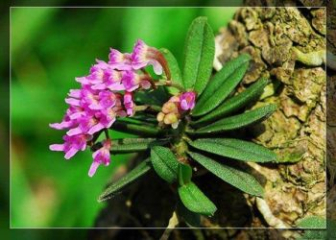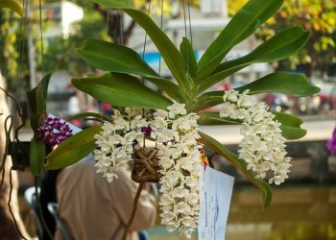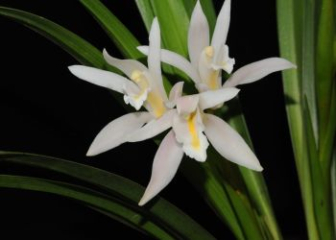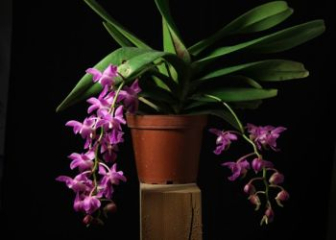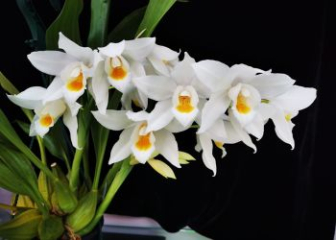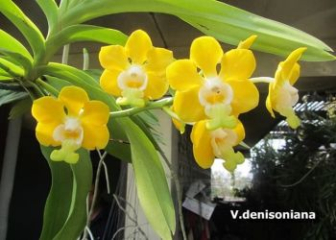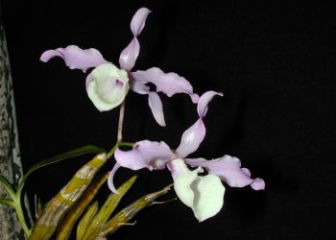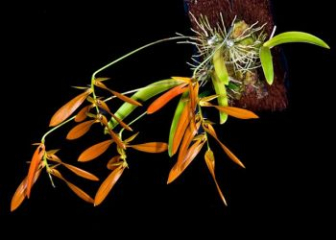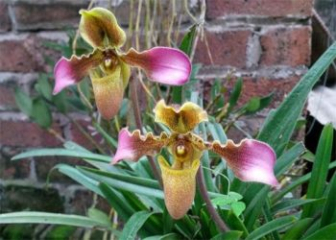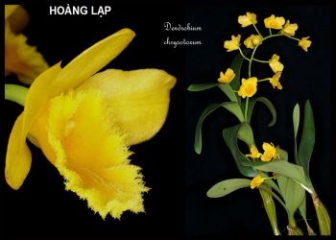Two-color Cymbidium Orchid - Origin, planting techniques & care
Blog | by
Cymbidium bicolor is a species of orchid widely distributed throughout Asia. Its leaves are short and thin. Its flowers have two main colors: reddish brown with light yellow edges and a light fragrance.
Two-color Cymbidium Orchid (scientific name: Cymbidium bicolor) is one of the beautiful, easy-to-grow and very popular Cymbidium species in Vietnam. With its elegant appearance, unique two-color flower color and gentle fragrance, Cymbidium bicolor is always a perfect choice for those new to growing wild orchids.
If you want to explore in detail the origin, morphological characteristics as well as effective planting and care techniques for two-color orchids, don't miss the following article from wild orchid !
Origin of the two-color orchid
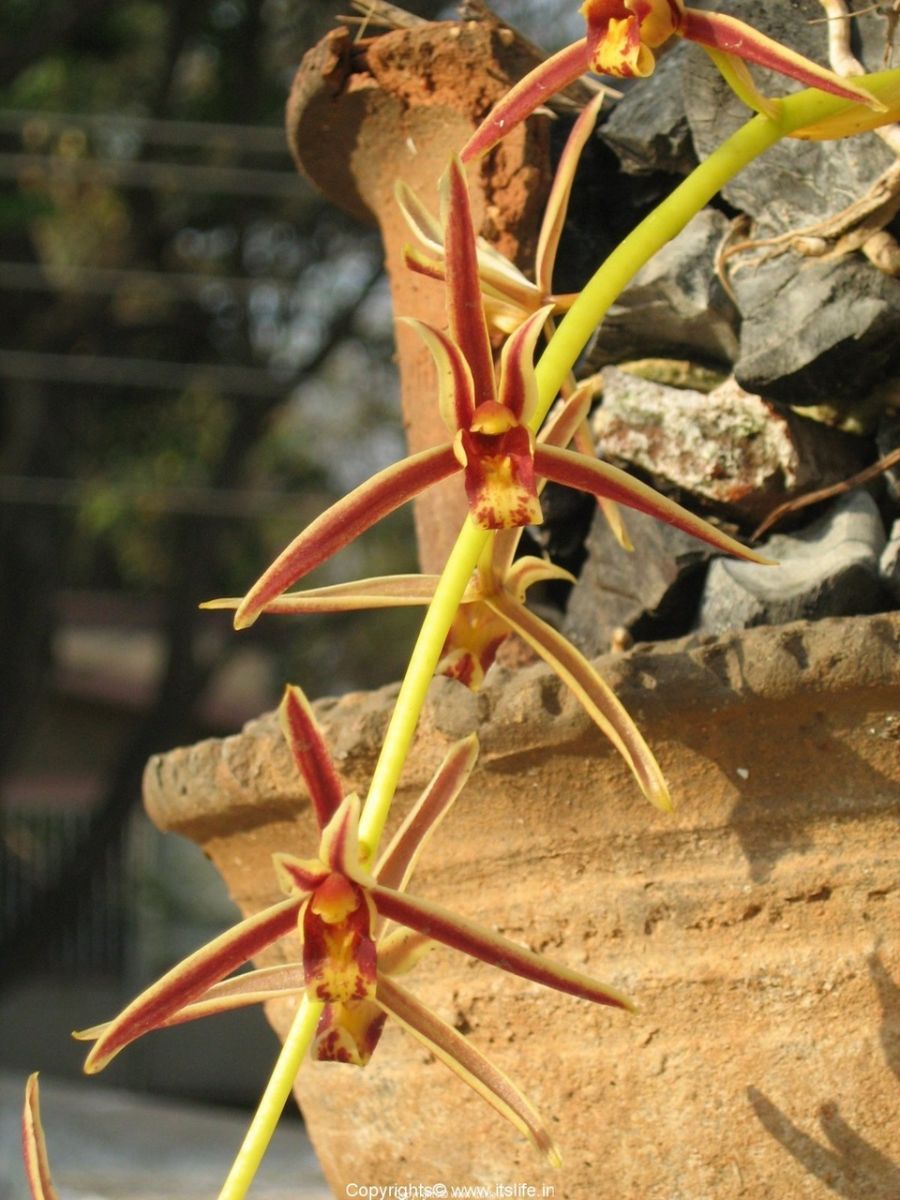
Learn about the origin of the bicolor orchid.
Cymbidium bicolor, also known as Cymbidium bicolor, is a native orchid species with a wide distribution throughout Asia, especially in some countries such as: India, China, Bhutan, Laos, Cambodia, Thailand, Indonesia,...
In Vietnam, this orchid species appears in many tropical forests in the Central Highlands, Southern Vietnam and Northwest regions.
Two-color orchid is a species of orchid that lives attached to large tree trunks or lives semi-terrestrial on moist, airy cliffs with light diffused light.
In addition to its collection value, the two-color orchid is also the "premise" for crossbreeding other beautiful and diverse commercial orchid varieties.
What is special about the two-color Orchid Sword?
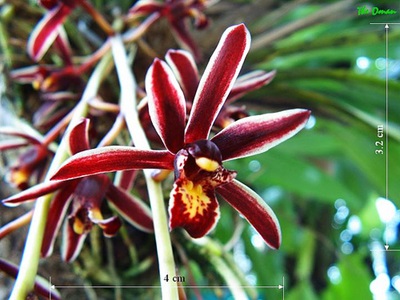
Two-color Cymbidium orchid face with characteristic colors and patterns.
Let's learn in detail about the characteristics of the shape of the stem, leaves, roots and flowers of the two-color Cymbidium orchid to see if they are outstanding and different from other Cymbidium orchids.
Stem (pseudobulb) & root :
- Flat, diamond-shaped pseudobulbs grow in close clusters, 4 - 8 cm long, 1 - 1.5 cm in diameter.
- The body is light green, with a purple tint when old.
- Pseudobulbs are usually surrounded by leaf sheaths, forming a shell.
- Aerial roots, long round shape, usually ivory white or cream yellow in color
Leaves :
- Each pseudobulb has 3 - 5 leaves, growing in a fan shape, the base of the leaves hugs the pseudobulb.
- The leaves are elongated, slightly pointed like a sword, with a length of 20 - 40 cm, width of 1.2 - 2.5 cm. Compared to other orchid species, the leaves of the two-colored sword orchid are shorter and smaller, so it is called "Short sword - short sword".
- Leaves are glossy green, without serrations.
Flower :
- Flowers grow in clusters on long flower stalks, usually growing from leaf axils at the base of the pseudobulb, each cluster has 10 - 20 small flowers.
- Flower stalks are hard, about 20 - 50 cm long.
- Flowers are 3 - 4 cm in diameter.
- The main color of the flower is purple-red with a pale yellow border, the petals are oblong, slightly blunt, the lip has 3 distinct lobes, the middle lobe is purple-red, with dark stripes and lines.
- Two-color orchids usually bloom from April to June, the flowers last from 2 to 4 weeks, and have a light, lingering fragrance.
Distinguishing between two-color Cymbidium orchid and Aloe Cymbidium orchid
The difference between bicolor orchid and aloe orchid.
Nowadays, many people confuse the aloe orchid and the two-color orchid because these two orchids have quite similar colors and shapes. Therefore, right below, we have helped you find the differences between them so that you can distinguish them more easily.
|
Comparison criteria |
Two-color Orchid Short Sword |
Aloe vera orchid |
|
Body (pseudobulb) |
Short, flat, small cylindrical pseudobulbs |
pseudobulbs indistinct, hidden under leaf sheaths |
|
Leaf |
Leaves are short, soft, elongated, 20 - 40 cm long. The tip is slightly pointed. |
Leaves are longer from 50 - 90 cm, thicker, harder, with purple stripes on the underside. |
|
Stem |
Grows from leaf axils |
Grows from the base of the pseudobulb |
|
Flower |
Smaller flowers The flower lip has 3 distinct lobes, the middle lobe has purple or dark red stripes. |
Larger flowers, lip has purple V-shaped streaks or dark stripes |
|
Flower season |
From April to June |
From February to April |
|
Distribution |
Asia wide |
Mainly distributed in the Central Highlands and South Central Coast. |
Techniques for planting and caring for two-color Cymbidium orchids
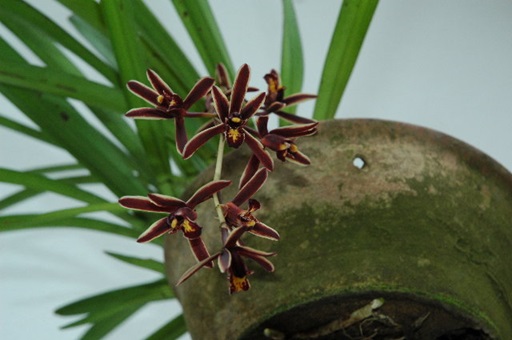
Learn the techniques for growing and caring for bicolor orchids.
If you are a first-time grower of the two-color Cymbidium orchid and do not have much experience, do not miss the detailed growing and caring techniques for this orchid species shared below. It is guaranteed to be simple but extremely effective!
Choose good two-color orchid varieties
The first important factor in growing Cymbidium bicolor that you need to pay attention to is choosing a good orchid variety, because only when the seedlings are good can the orchid pot develop optimally. When choosing Cymbidium bicolor orchids, please note the following:
- Choose plants that have 2-3 pseudobulbs, are not crushed, and have no signs of pests or diseases.
- The tree has intact roots, ivory white in color, the root tips are green.
- If you want healthy seedlings, you can choose original forest products, but it takes a lot of experience and time to acclimatize.
- If you want it to be easy to grow and bloom quickly, you can choose pure potted plants.
Prepare the growing medium for two-color orchids
Although the two-color Cymbidium orchid can be grown in pots or grafted on wood, if you are a newbie with little experience, you should prioritize the method of growing in pots because it has good moisture retention, is easy to control, and easy to move.
When growing this orchid in pots, you can refer to some of the following substrates:
- Plastic or terracotta pots with good drainage
- Pine bark, charcoal, shredded coconut fiber, pumice stone,...
- The growing media needs to be cleaned by soaking in lime solution or Physan to remove fungi and bacteria before planting bicolor orchids.
Two-color Cymbidium orchid growing techniques
Planting two-color orchids with the right technique will help your orchid pot grow strongly, take root soon, produce many pseudobulbs, and many flowers. And right below are the basic steps, let's refer to them right away!
- Step 1 : Treat the seedlings by pruning diseased roots and yellow leaves, then soak them in Physan 20 SL and Viben C solution for 10-15 minutes to disinfect. If necessary, soak the base of the tree in B1/Atonik solution to stimulate root growth.
- Step 2 : After treatment, the seedlings need to be left in a cool place for 1-2 days to dry completely and heal the cut before planting.
- Step 3 : Place the tree base slightly tilted, the base is 1 - 2 cm higher than the growing medium.
- Step 4 : Fix the base and the trunk with nylon rope or a stick to avoid shaking the tree.
- Step 5 : Leave the pot in a cool place, away from direct sunlight and rain for 2-3 days before starting to water lightly.
How to care for two-color Cymbidium orchids from A to Z
How to care for bicolor orchids to bloom and stay fresh for a long time.
To help Cymbidium bicolor grow strongly, bloom beautifully, on time and stay fresh for a long time, you need to pay attention to daily care from planting location, watering, fertilizing to disease prevention and treatment. Specifically, find out more below.
Planting location :
- Place the pot in a place with 50 - 70% light, early morning sunlight or under a layer of black mesh.
- Hang in a ventilated, covered place
- Ideal temperature from 18 - 30 degrees Celsius
- Air humidity from 60 - 80%
Watering properly :
- Dry season - sunny season : Water once a day in the early morning or cool afternoon, do not water at noon.
- Rainy season - humidity : water once every 2 - 3 days, check the substrate before watering.
- Note : If you plant grafted wood, you need to water more, do not water in the evening, do not water by pouring strong water on the orchid roots.
Fertilize appropriately :
- Growth stage: NPK 30-10-10 fertilizer, diluted B1 to stimulate roots and develop pseudobulbs.
- Stabilization phase: Fertilize with diluted NPK 20-20-20, combined with organic fertilizer to nourish the plant.
- Flowering preparation stage: Fertilize with NPK 6-30-30, 10-55-10 to stimulate flower buds, alternate with organic fertilizer to provide nutrients for orchids and avoid making the orchid "hardened".
Effective disease prevention :
Here are some effective ways to prevent and treat diseases for Cymbidium orchids to help them stay healthy, lush and free of pests and diseases.
|
Type of disease |
Token |
Treatment |
|
Two-color orchid is rotten |
The orchid root is soft, mushy and has a foul smell. |
Cut off the rotten, soft pseudobulbs and apply scar healing glue. Spray diluted Physan 20 SL |
|
Two-color orchid with leaf spots and yellow leaves |
Orchid leaves have black spots, dry edges, wilt, and fall off abnormally. |
Spray Antracol, Ridomil Gold according to the instructions |
|
Two-color orchid has mealybugs and red spider mites. |
Leaves are twisted, white spots appear in patches, and spider webs cling to the trunk. |
Spray Confidor, Ortus periodically every 10 days Use 70 degree alcohol to clean the fungus |
Price list of two-color Cymbidium orchids
Right below is the price list of Cymbidium bicolor orchids that we have compiled from gardeners, orchid clubs or e-commerce platforms in Vietnam. Let's take a look to see how much this Cymbidium orchid costs.
|
Two-color Cymbidium Orchid |
Reference price |
Note |
|
Two-color short sword mined from the forest |
100,000 - 300,000 VND/kg |
Raw forest, not pure |
|
Two-color short sword has been purified |
80,000 - 200,000 VND/pot |
The plant has 1 - 2 pseudobulbs and developed roots. |
|
Two-color short sword large basin |
250,000 - 400,000 VND/pot |
Large pot, with 3 - 5 pseudobulbs, with buds or flowers |
Two-color Cymbidium Orchid Image
We invite you to admire the two-color Cymbidium orchid through a series of realistic, sharp images right below to fully feel the unique attraction of this special Cymbidium orchid. We guarantee you will be "amazed" by their harmonious color combination.
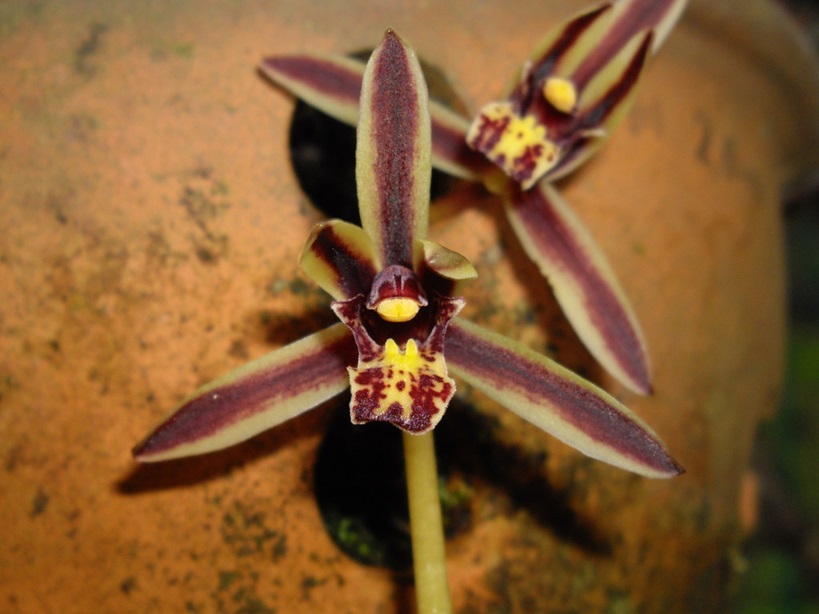
Small and pretty bi-colored Cymbidium orchids.
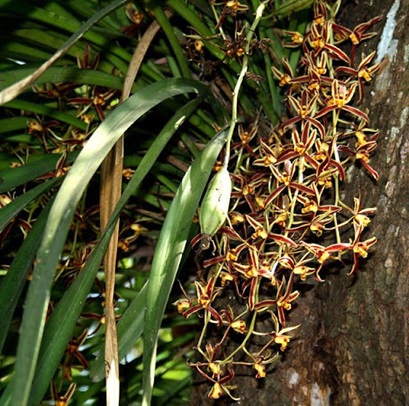
A two-color Cymbidium orchid with lots of flowers.
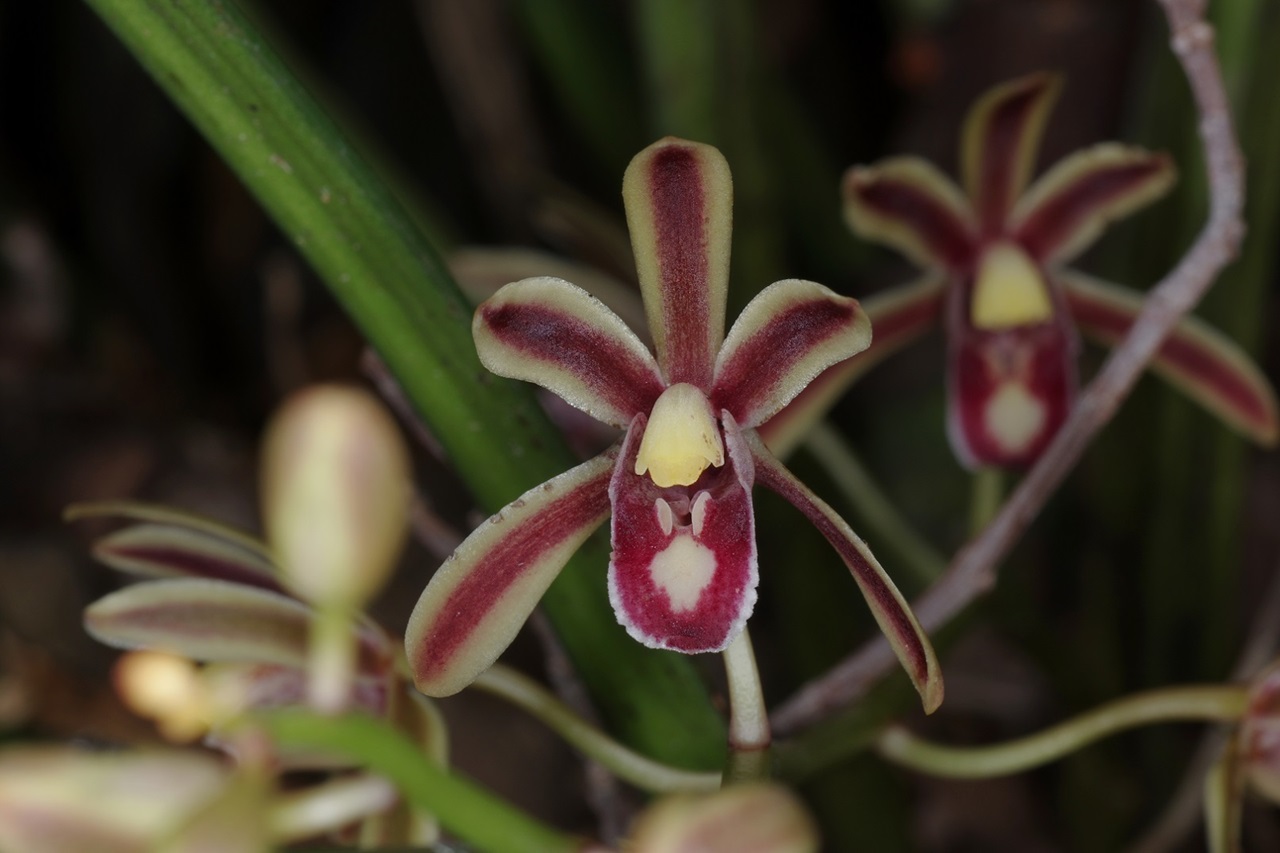
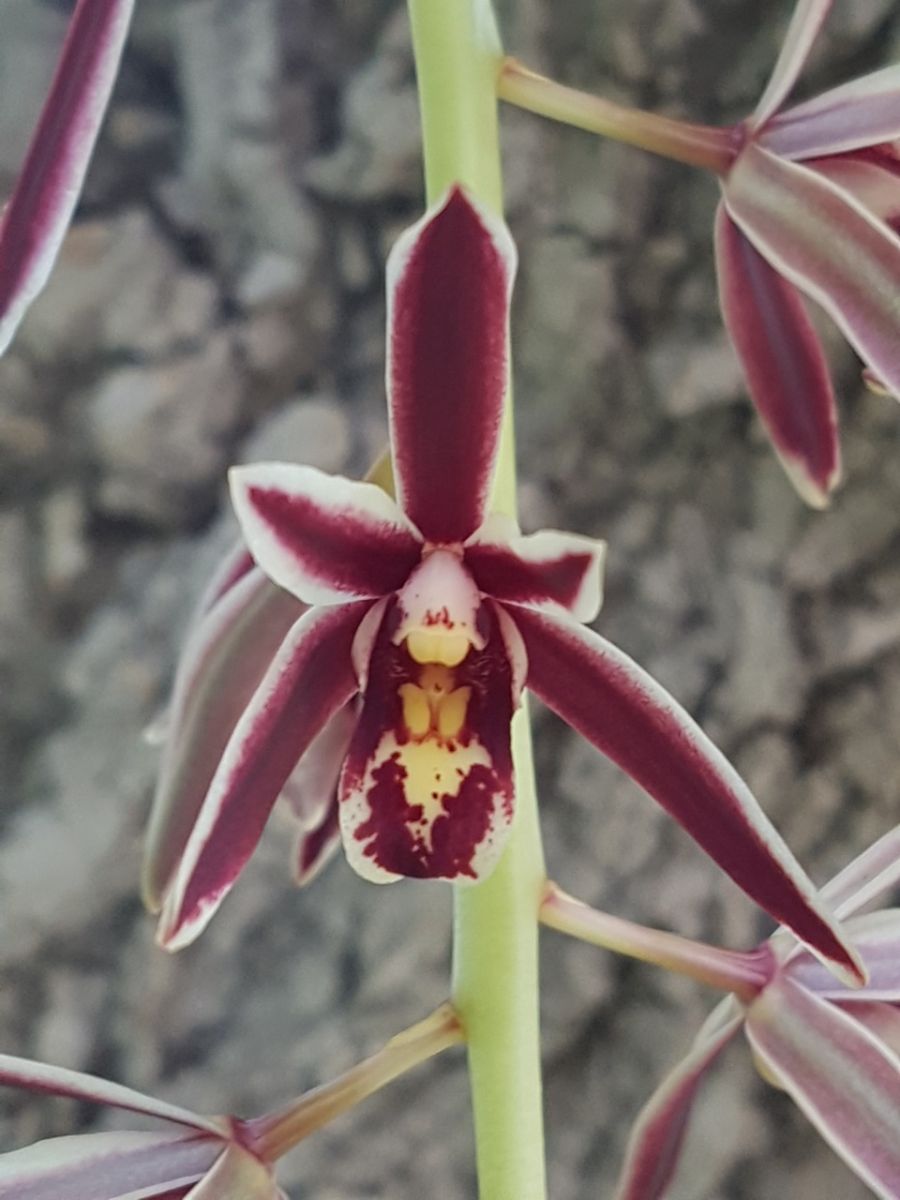
Close-up of bicolor orchid face.
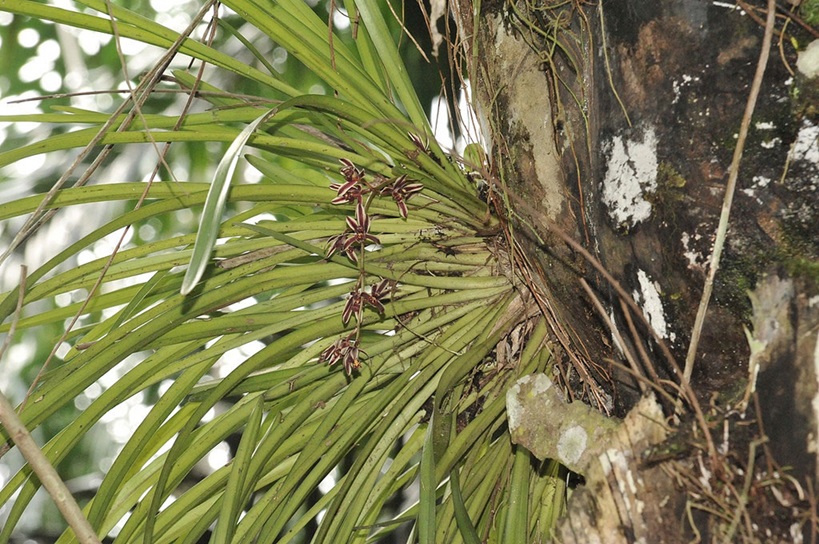
Image of two-color orchid growing on a tree trunk in nature.
Above orchid-vn.com has shared interesting information about the two-color Sword Orchid - a wild orchid with unique beauty. If you are looking for beautiful, easy-to-grow orchids with a faint fragrance, the two-color Sword Orchid is not a bad choice.
If you want to learn more about other beautiful orchids or orchids, visit our Blog section regularly so you don't miss any interesting articles!
